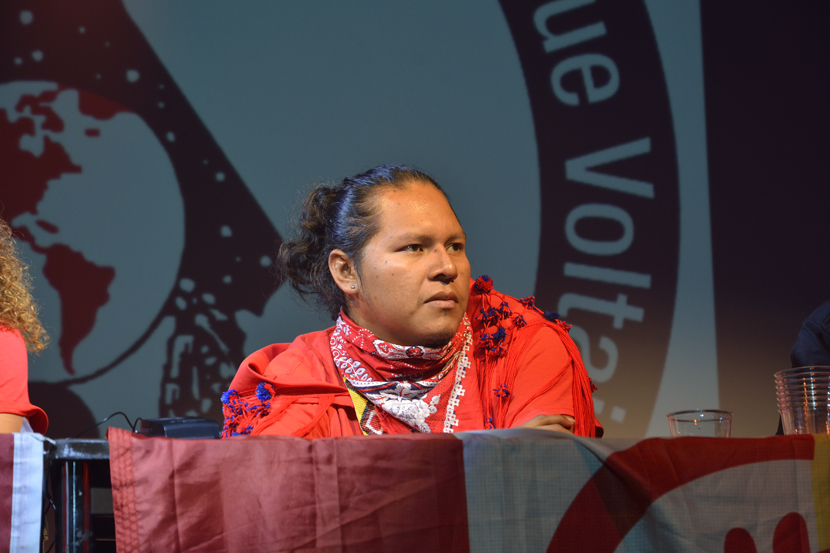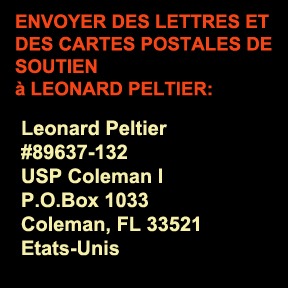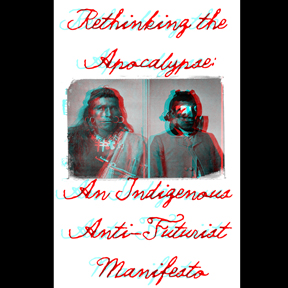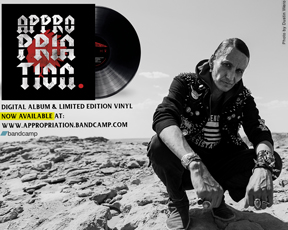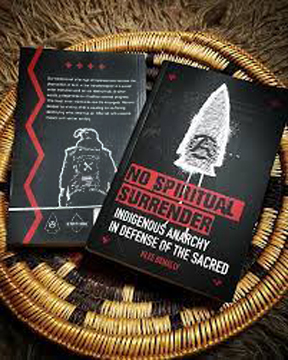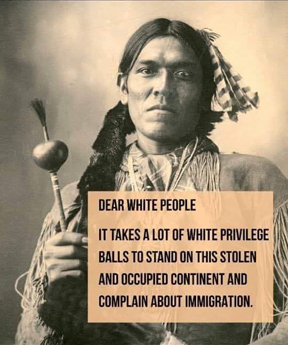Français
41st Day of Solidarity of CSIA-Nitassinan
Octobre 9, 2021
Taneyulime Ludwina Pisili,
Kali’na from Guiana
Transcript, translation and photos Christine Prat, CSIA-Nitassinan
Welcome to all, thank you for being here. I’ll introduce myself: Taneyulime, Kali’na from Guïana, chairwoman of the Aukae association, which participates in the development of the Kali’na culture. I should have had a speaker today, unfortunately, I am very sorry, these are the inconveniences of live broadcasting. There were big storms yesterday in Guïana, there is very little connection, it is poorly installed, poorly managed, and unfortunately, we have trouble reaching our speakers. But I’m still going on with the ‘Indian Homes’ issue and talk to you about it today.
So, today, we’re going to talk about Indian ‘homes’ [boarding schools]. Maybe you have heard about them, it reminds of the news about the Canadian residential schools. You must know that in ‘France’ too, there were boarding schools for Native Americans, which contributed to the assimilation of the Indigenous populations in French Guïana, to become ‘good French’ people. Something that was initially done to make up for the school deficit. There were a lot of young Natives who could not go to school because of the environment, we are in the Amazon, there are very remote villages, and we are a population that is not originally sedentary and that moves a lot, many did not go to school. To make up for this, in the middle of the 20th century, the ‘Indian homes’ were set up. It is important to know that these Indian Boarding Schools existed from 1949 to 2012, but this process of assimilation and therefore these boarding schools have existed since the 17th century, since the arrival of the settlers in the 15th century, but especially since the 17th century, at the time of the Jesuits.
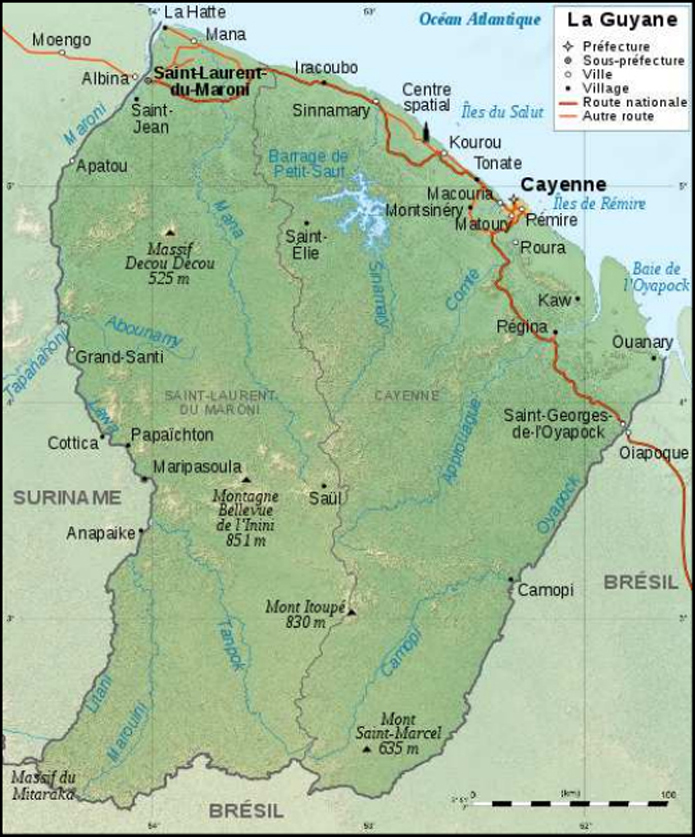 There was a desire to educate the indigenous populations, especially the Kali’na because they were mainly on the coast. [She shows a map of Guïana]. Here, there is a line that divides it in two, the coast above, and all that is Amazonian Forest, which is now the Amazonian Park. Below, you have the Wayãpi, Wayana populations, and recently, an indigenous population from Brazil that emigrates to our side, we understand why, given the current situation in Brazil and all the problems, they take refuge on French lands. And, above, on the coast, you have the Kali’na, Arawak and Teko populations. So, six indigenous populations, thirty in the past, at the beginning of colonization, and you will understand immediately that there was a big population deficit, I would speak of human genocide, and then a cultural genocide.
There was a desire to educate the indigenous populations, especially the Kali’na because they were mainly on the coast. [She shows a map of Guïana]. Here, there is a line that divides it in two, the coast above, and all that is Amazonian Forest, which is now the Amazonian Park. Below, you have the Wayãpi, Wayana populations, and recently, an indigenous population from Brazil that emigrates to our side, we understand why, given the current situation in Brazil and all the problems, they take refuge on French lands. And, above, on the coast, you have the Kali’na, Arawak and Teko populations. So, six indigenous populations, thirty in the past, at the beginning of colonization, and you will understand immediately that there was a big population deficit, I would speak of human genocide, and then a cultural genocide.
 The Jesuits wanted to educate the native populations, as the Pope had decided that they could not colonize the ‘new’ lands, but that they could evangelize them. Thus, they tried to instil the Christian Word, the Catholic Word, into them, and teach them everything about the catholic religion. Those Jesuits came first, in the 17th century, as ‘saviors’, to ‘save us’ from our savagery and our lack of education. But also, thanks to the schools they created, many Kali’na escaped slavery. It is very often spoken of the enslavement of the African population, of the people deported from Africa, but WE have also known enslavement. We must not forget it, we must remember it, and, most of all, say it, denounce it. Often, Indians hunters kidnapped Indigenous populations to take them to the islands or to be slave on the spot, in Guïana. We were very far from Europe then, even more than today, and they took advantage of this situation to take us to the islands and use us as slaves. Those who have not been put in chains have been able to go to those schools, to be educated, to learn to read and write French, but also to learn certain medicinal techniques and surgery to make up for the lack of people on the land at the time and to be able to help the settler populations who lacked then – and still lack today – hospitals, services able to treat them.
The Jesuits wanted to educate the native populations, as the Pope had decided that they could not colonize the ‘new’ lands, but that they could evangelize them. Thus, they tried to instil the Christian Word, the Catholic Word, into them, and teach them everything about the catholic religion. Those Jesuits came first, in the 17th century, as ‘saviors’, to ‘save us’ from our savagery and our lack of education. But also, thanks to the schools they created, many Kali’na escaped slavery. It is very often spoken of the enslavement of the African population, of the people deported from Africa, but WE have also known enslavement. We must not forget it, we must remember it, and, most of all, say it, denounce it. Often, Indians hunters kidnapped Indigenous populations to take them to the islands or to be slave on the spot, in Guïana. We were very far from Europe then, even more than today, and they took advantage of this situation to take us to the islands and use us as slaves. Those who have not been put in chains have been able to go to those schools, to be educated, to learn to read and write French, but also to learn certain medicinal techniques and surgery to make up for the lack of people on the land at the time and to be able to help the settler populations who lacked then – and still lack today – hospitals, services able to treat them.
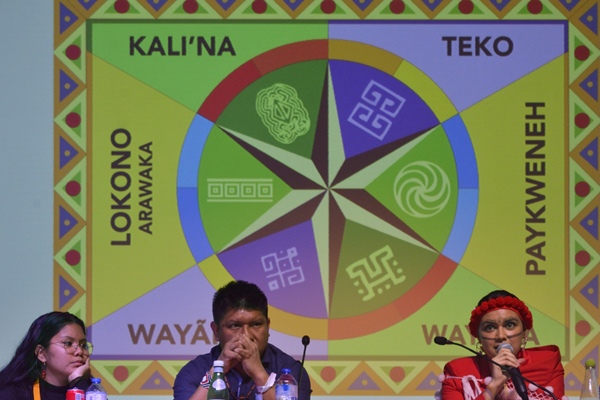 All of this existed, more or less, until the end of the 17th century, just before the Revolution. So, these Jesuits would be the ‘good period’ of the Indigenous boarding schools. Then there will be the ‘reductions’, that were often in Paraguay, very violent boarding schools, where assimilation is violent, hard and radical. After that, there will be a great emptiness. Anyway, it is simple, we, the indigenous populations, have never been the priority. Until today, we are not, we were already not at the time, we were very briefly, as we have seen, at the time when the Jesuits were there, but afterwards there was a total disinterest of the French administration for us. We see it in history, in 1969, it is only then that we have the right, the duty, I should say, to become French, on our papers, administratively. It is very, very late, compared to neighboring countries.
All of this existed, more or less, until the end of the 17th century, just before the Revolution. So, these Jesuits would be the ‘good period’ of the Indigenous boarding schools. Then there will be the ‘reductions’, that were often in Paraguay, very violent boarding schools, where assimilation is violent, hard and radical. After that, there will be a great emptiness. Anyway, it is simple, we, the indigenous populations, have never been the priority. Until today, we are not, we were already not at the time, we were very briefly, as we have seen, at the time when the Jesuits were there, but afterwards there was a total disinterest of the French administration for us. We see it in history, in 1969, it is only then that we have the right, the duty, I should say, to become French, on our papers, administratively. It is very, very late, compared to neighboring countries.
There is going to be a long break in history, they will totally stop being interested in us, and we are going to be decimated in a ‘microbial’ way – is it true, I don’t know, I wasn’t there – but apparently the diseases have decimated us. I think there was a small massacre, but that’s my personal opinion.
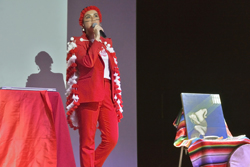 In the middle of the 20th century, there was the ‘departmentalization’ of France [‘départements’ are quite similar to counties]. So, they feel at last concerned about Guïana and the indigenous populations. And they notice indeed that all these works of assimilation and evangelization did not really work on the indigenous population of Guïana, especially among the Kali’na. Maybe you don’t know it, but we are great warriors and we have fought for a very long time. So, it is hard to assimilate us. It is also hard because we move around a lot. We tend to move around, so the people who run this country look for solutions to overcome this and how to educate these indigenous people who move around rather often, who don’t go to school, and who drop out of school, even when they do go to school, quite early, since marriages are early and their families need them for farming, fishing, etc., to sustain the family.
In the middle of the 20th century, there was the ‘departmentalization’ of France [‘départements’ are quite similar to counties]. So, they feel at last concerned about Guïana and the indigenous populations. And they notice indeed that all these works of assimilation and evangelization did not really work on the indigenous population of Guïana, especially among the Kali’na. Maybe you don’t know it, but we are great warriors and we have fought for a very long time. So, it is hard to assimilate us. It is also hard because we move around a lot. We tend to move around, so the people who run this country look for solutions to overcome this and how to educate these indigenous people who move around rather often, who don’t go to school, and who drop out of school, even when they do go to school, quite early, since marriages are early and their families need them for farming, fishing, etc., to sustain the family.
So, there were two stages. There was a first stage when the sisters came, at the beginning of the middle of the 20th century. It was called ‘orphanages’, but in fact it was clearly schools. They were places where they took Indigenous people, and took them away from their families that they still had. I don’t know if the word ‘orphanage’ is appropriate, but at least that is what they were told “we are taking you to the orphanage, because we can’t leave you like that, deep in the forest, near the rivers, etc.”. But that’s the term that the people who lived there used. And that’s how they talked about it: “I was in the orphanage”. While these people still had their parents. They were taken away from their families. They were not orphanages, it is the word these sisters used to take these children from their families, but these children still had families. Maybe their parents were away hunting, or away at sea, or away in the forest. But they still had their parents, they were effectively torn away from their parents at a very early age, since the clergy, and mainly the sisters who were there at the time, were asked to take them between the ages of 6 and 15. This was requested by decree, but it was not done in reality. Because, for them, at 6 years old they were already too old, not flexible enough, not easy to indoctrinate. So, in fact, they were taken from their parents and sent away from them, from 4 to 16 years old. The earlier the better, the younger they are, the better they are assimilated.
 So, at the very beginning, they were sisters’ or brothers’ schools, but they were not yet ‘Indian homes’. It was made official in 1964, but we know from the archives that the reality was different, it existed since 1949. There have been five of them, mainly on the coast. As I said, by decree it was between 6 and 15 years old, but in reality, between 4 and 16 years old, to, supposedly, protect the young girls, to avoid that they are married too early, also to teach them a maximum of things and that they do not forget the good Catholic practices, since the authorities realized the multiple failures of the preceding centuries, when the Kali’na returned to their traditional customs. Thus, there were female ‘homes’ run by the Sisters and male homes run by the Brothers of the Holy Spirit. All this will last officially until 1980, but our Wayãpi and Wayana brothers will know it until 2012, when denunciations of these institutes started to be heard, institutes that ask the Kali’na – and any other Indigenous People – not to speak their mother language, to be underfed, compared to their village – while they were supposed to be saved, protected – and especially to be very far from their families, whom they can only visit once or twice a year, and they did not allow the parents to come to see their children.
So, at the very beginning, they were sisters’ or brothers’ schools, but they were not yet ‘Indian homes’. It was made official in 1964, but we know from the archives that the reality was different, it existed since 1949. There have been five of them, mainly on the coast. As I said, by decree it was between 6 and 15 years old, but in reality, between 4 and 16 years old, to, supposedly, protect the young girls, to avoid that they are married too early, also to teach them a maximum of things and that they do not forget the good Catholic practices, since the authorities realized the multiple failures of the preceding centuries, when the Kali’na returned to their traditional customs. Thus, there were female ‘homes’ run by the Sisters and male homes run by the Brothers of the Holy Spirit. All this will last officially until 1980, but our Wayãpi and Wayana brothers will know it until 2012, when denunciations of these institutes started to be heard, institutes that ask the Kali’na – and any other Indigenous People – not to speak their mother language, to be underfed, compared to their village – while they were supposed to be saved, protected – and especially to be very far from their families, whom they can only visit once or twice a year, and they did not allow the parents to come to see their children.
These institutions were made for the indigenous populations of ‘French’ Guiana. Today, I would have an indigenous person from Suriname testify, because the clergy did not stop at the borders, they went to the lands of Suriname and to the lands of Brazil to take children who were not “of the French state”, to put them in these Indian ‘homes’. They were beaten, kicked, put on slabs… Well, these are things that you could say also existed ‘at home’, in hexagonal France at that time. These are things that people from the post-war period could also tell. Indeed, it is sure. But these are things that must be emphasized and not forgotten. Taking a child away from his parents, whom he can only see twice a year, not feeding him properly, not giving him access to what the priests have access to, TV, games, not allowing him to speak his mother language with his friends, only allowing him to speak French when he is taken from Surinam where he came from schools where Dutch was spoken, it is still very complicated, it is frustrating. As in many boarding schools of this type, there is also abuse other than psychological, physical and sometimes sexual, as in many stories of catholic boarding schools. Unfortunately, we don’t have any testimony from this person, but I hope that another time you will be able to see her, and we have her story in Aukae, so we will be able to broadcast it. I think it’s important today to talk to you about this. [She shows a map] You can see the different ‘Indian homes’ in Guiana, there were mainly five, but you can see others.
I am perhaps not the best person, not having lived it, to share what it could be emotionally distressing to be in these ‘homes’, but I denounce it. It also existed in France. It existed from 1949 to 2012, but it existed for centuries too, as it is since the arrival of the colonists that they try to arrest the uneducated savages, that they try to educate them under multiple pretexts, but in the end, they don’t give them the same possibilities as other people. By mistreating them and creating this assimilation, there has been a lot of frustration among the Indigenous populations. Now, on the other hand, this is my testimony. There are people who, after these ‘homes’, did not want to teach their children to speak Kali’na, for example – I am Kali’na, so I can speak about it – there are people who did not want to teach their children to speak their mother language, because they were ashamed! There are people, until today, who are traumatized, who don’t talk about it anymore, these people are traumatized even if they don’t talk about it. Today, fortunately, we are in a cultural reappropriation. [She shows two photos of boarding schools from the past] You can see young Kali’na girls in traditional dress, who were taken away from their families, and there you can see how they were assimilated by forcing them to put on ‘civilized’ clothes.
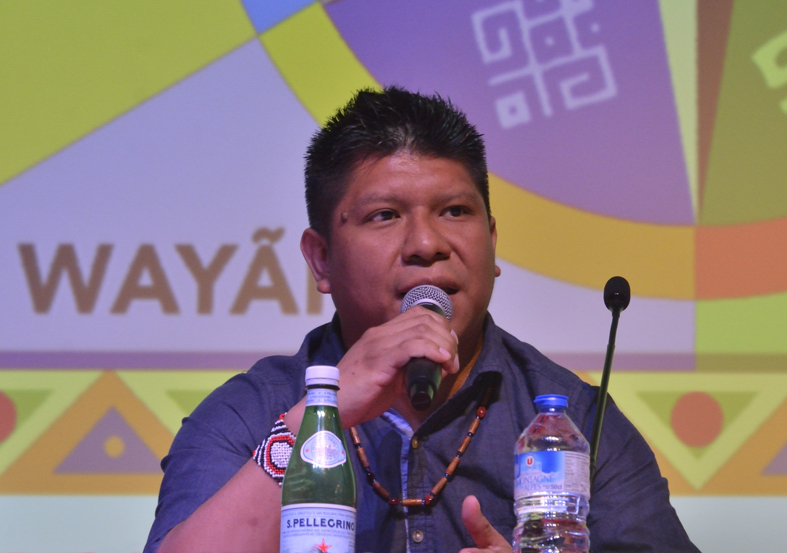 I thank people like Ludovic Pierre, who is at the origin of the Makan collective, which for more than a year has been bringing together young activists like me, like my friend Taina who is in the audience, and like my other friend who is not here, but who perhaps hears us, and is a Kali’na artist. There is a desire, in response to these ‘Indian homes’ today, for a reappropriation of identity, but also of culture, with the reappropriation of the arts, of language and of our history, too. Our history is very often erased, you will never hear about the slavery of the Amerindians in Guïana, or maybe since a very short time. But it is not talked about, we are not recognized, it is primarily Afro-descendants and not us. Even today, many things are questioned, in art or in other fields, even music.
I thank people like Ludovic Pierre, who is at the origin of the Makan collective, which for more than a year has been bringing together young activists like me, like my friend Taina who is in the audience, and like my other friend who is not here, but who perhaps hears us, and is a Kali’na artist. There is a desire, in response to these ‘Indian homes’ today, for a reappropriation of identity, but also of culture, with the reappropriation of the arts, of language and of our history, too. Our history is very often erased, you will never hear about the slavery of the Amerindians in Guïana, or maybe since a very short time. But it is not talked about, we are not recognized, it is primarily Afro-descendants and not us. Even today, many things are questioned, in art or in other fields, even music.
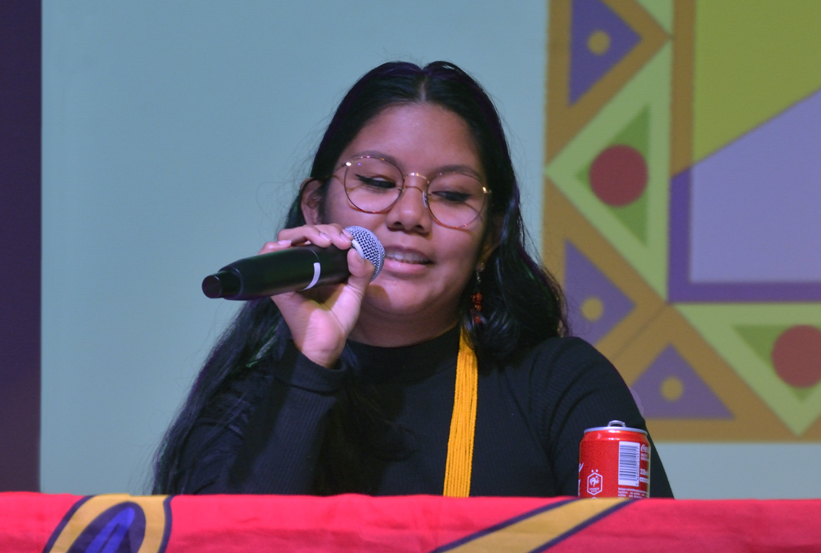 As if, in the end, the thousands of years we spent on these lands had been for nothing, had left no trace. So today we are trying to restore the truth and we are trying to show that we are still alive and proud to be here, proud to be on these lands, and we are protecting them in every possible way. We participate in counter-conventions, like COPs, for instance, or different seminars. We also have young artists, we will present one today, Clarisse Da Silva, who also participates in this activism through art. And so, I thank all these young people, all these people who denounce on a daily basis, who speak about the reality of things, and I thank you also for listening to us.
As if, in the end, the thousands of years we spent on these lands had been for nothing, had left no trace. So today we are trying to restore the truth and we are trying to show that we are still alive and proud to be here, proud to be on these lands, and we are protecting them in every possible way. We participate in counter-conventions, like COPs, for instance, or different seminars. We also have young artists, we will present one today, Clarisse Da Silva, who also participates in this activism through art. And so, I thank all these young people, all these people who denounce on a daily basis, who speak about the reality of things, and I thank you also for listening to us.
I talked about cultural reappropriation, identity, but also land reappropriation. Because I know that you know, perhaps, that we there is a lot about the environment, and that here too we suffer a lot, the land suffers, and it is our land, the land of our ancestors. Even if we have difficulty in reclaiming it, it is still the land of our ancestors. Our ancestors are buried in this land, they have left burial sites, they have left artifacts. We must protect it. I also denounce all these big multinationals that are installing open-pit mines and many big power plants that are damaging our ecosystem.
We talk about human genocide that is ignored, cultural genocide that I talked about a little bit, and also ecocide, nowadays. But that concerns everyone, everyone here, because we all live on the same planet and unfortunately, it is going badly. Nothing is going well anymore, we come from the Amazon, and the lung of the earth, at the moment, rejects much more CO2 than it absorbs. We must do something, we must wake up.
Our association fights for the protection of the environment but also for the influence of the arts and the Kali’na culture. So don’t hesitate to give something to continue our projects. Thank you.
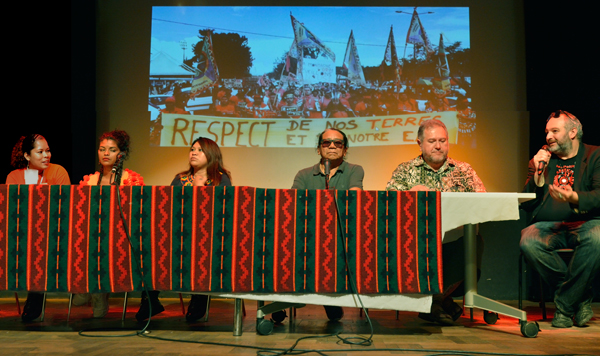 Vanessa Joseph, Cindy Van der Pijl, Nicole Chanel, Félix Tiouka, Moëtai Brotherson, Sylvain Duez-Alessandrini
Vanessa Joseph, Cindy Van der Pijl, Nicole Chanel, Félix Tiouka, Moëtai Brotherson, Sylvain Duez-Alessandrini
AGAINST THE GOLD COMPANY ‘MONTAGNE D’OR’, THE DENIAL OF THEIR IDENTITY, AND THE STRUGGLE FOR MOTHER EARTH: YOUNG WOMEN FROM FRENCH GUÏANA SPOKE, ON OCTOBER 13, 2018, DURING THE ‘SOLIDARITY DAY’ OF THE CSIA
Recorded on October 13th, 2018
Article and translation by Christine Prat Français
November 12th, 2018
The rainforest of “French” Guïana has been threatened for years by a huge gold mine project, by a mining company calling itself “Montagne d’Or”, meaning “Gold Mountain”. This company is a merger between the Canadian company Columbus Gold – could you think of a more colonialist name – and the Russian company NordGold, which has already devastated a lot of Indigenous lands in the world. NordGold has a majority in the Montagne d’Or merger. The Indigenous Peoples have opposed the project from the beginning. They have long suffered from illegal gold mining, namely from the garimpeiros from Brazil, which pollutes the rivers on which their lives depend. The rainforest of Guïana has more biodiversity than the whole of Europe. Some people there are willing to give it up with the excuse of ‘creating jobs’, the magical words that no magician would dare to use. The Indigenous Peoples, who mainly need clean water, and already felt the damages caused by gold mines, totally reject the project. Between the beginning of March 2018 and the beginning of July 2018, Public Hearings took place in Cayenne and Saint-Laurent-du-Maroni. Indigenous people had the feeling of not being heard. However, the conclusion of the public hearings was that the Montagne d’Or project could not be accepted as it is now. Since then, Montagne d’Or keeps going to Indigenous villages, trying to corrupt traditional leaders, but they don’t give in. The present Director General of Montagne d’Or, Pierre Paris, has worked before for companies as Rio Tinto and BHP Billiton, well-known names to Indigenous Peoples all over the world, who are fighting against desecration and pollution of their ancestral lands by mining companies.
As part of the 37th Day of Solidarity with Indigenous Peoples, organized by CSIA-nitassinan, a panel was composed of Félix Tiouka, member of the town council of Awala-Yalimapo, belonging to the first generation of Indigenous activists, and three young women from the Indigenous Youth of Guïana, JAG, Jeunesse Autochtone de Guyane.
As all Indigenous people who spoke during the meeting, the Indigenous people from Guïana spoke about the destruction of their identity and culture, but also about the problems they had with having to live as “so-called French citizens”, in a Republic that discriminates them, impoverishes them, pollutes their land, while forcing them to submit to the western way of life. “Départementalisation” – meaning that Guïana and other French colonies were officially annexed to France and considered as French “départements” (equivalent to US counties) – was declared in 1945. The “Francization” Act was adopted in 1969. Officially, Indigenous Peoples of Guïana are supposed to be French citizens like all inhabitants of France…
The article below is mainly based on a transcription of speeches by three young women from Guïana, Vanessa Joseph, Nicole Chanel and Cindy van der Pijl, recorded by Pascal Grégis and Christine Prat, members of CSIA, on October 13, 2018.
 Vanessa Joseph, vice-Chairperson of the Indigenous Youth of Guïana, already took part in the Solidarity Day of 2017, together with Yanuwana Tapoka. She first said how happy she was to take part in this meeting, “with Moëtai [from Tahiti], Yvannick [from Kanaky, “Nouvelle Calédonie] and my Uncle Félix [Félix Tiouka].” She thanked the CSIA for giving them an opportunity to speak, and also thanked all the people who had reacted to her appeal to donate books for schools inside the country. “We have used them well. Today, it has become a larger project, we are going to build libraries in remote places inside. All this thanks to you, I thank you again.” [In Guïana, the ‘inside’ means the rainforest, where there are no roads, as opposed to the cities on the coast or along the River].
Vanessa Joseph, vice-Chairperson of the Indigenous Youth of Guïana, already took part in the Solidarity Day of 2017, together with Yanuwana Tapoka. She first said how happy she was to take part in this meeting, “with Moëtai [from Tahiti], Yvannick [from Kanaky, “Nouvelle Calédonie] and my Uncle Félix [Félix Tiouka].” She thanked the CSIA for giving them an opportunity to speak, and also thanked all the people who had reacted to her appeal to donate books for schools inside the country. “We have used them well. Today, it has become a larger project, we are going to build libraries in remote places inside. All this thanks to you, I thank you again.” [In Guïana, the ‘inside’ means the rainforest, where there are no roads, as opposed to the cities on the coast or along the River].
However, Vanessa also had to say that the opening of the school year went wrong. She reminded that “inside the country, there are only primary school, and not in every village.” Students who have to go to secondary or grammar schools, must go to the nearest town which has one, but the ‘nearest’ town can be quite far away. The children then have to live with a foster family or in a boarding school. Last September, some children did not have a place in either a foster family or a boarding school. They went back to their villages, thus wasting a school year. Moreover, some parents don’t want to send their children to families on the coast, as there have been some problems. The only solution proposed by the Administration, each year, is to more carefully select the families. Vanessa says that “children in Taluwen, a town on the Upper Maroni, asked that a secondary school be built, so that they could stay near their parents, which is normal for 12-years-olds”… “At the moment, it is still a project. They started building, then stopped, then started again… Let’s hope that the secondary school will exist one day. They also started to build a boarding school in Maripasoula, again, we hope it will be completed without problems.”
Vanessa added that they are still trying to achieve projects in order to improve the people’s daily life, inside the country. When they succeed, it is thanks to a lot of support, like that of the CSIA.
Vanessa summed up what had happened about the gold mine project, since her last visit. Public hearings have been organized in Cayenne and in Saint-Laurent-du-Maroni, from the beginning of March to the beginning of July 2018.
“The representatives of the Indigenous Peoples have been kind of ignored, for what they had to say. At first, they listened to all questions, but then they started to select them, probably because there were disturbing questions.” …”a public hearing was planned in a village, west of the country, but they [from the company] did not show up.” Thus, the hearings were not very satisfying. However, “the public hearing decided: the project cannot be started as it is. It is not possible to propose such a large project to a population, with so few explanations and so unclear explanations. Thus, the project has to be amended.”
“Meanwhile, Vanessa adds, Montagne d’Or has stared to establish itself in the villages, demanding to meet the traditional leaders to offer them money or positions… It was a bit shocking, thus they all said ‘no’, except for one.” Currently, the Montagne d’Or company keeps trying to convince people, with some modifications of their project, and most of all by modifications of their explanations and communication. But for Indigenous people, it remains ‘no’.
Vanessa thanks the audience, “it is really a great pleasure to see you all again.”
 Next speaker is Nicole Chanel, from Camopi. She joined the Indigenous Youth recently.
Next speaker is Nicole Chanel, from Camopi. She joined the Indigenous Youth recently.
She explains that she is Teko, a People formerly called ‘Emérillon’ by French explorers, at the time of colonization. ‘Emérillons’ means people who live on fishing. “We demanded to be called Teko’s, which means ‘Indian Warriors’. We, Teko’s, come mainly from the banks of the Oyapock River, which is the border between Brazil and ‘France’. In our village, there were two nations, the Teko’s and the Wayãpi, but now we are mixed. We descend from the Tupi-Guarani, Indians who live in the Amazonian rainforest. Nowadays, the Tupi-Guarani live in Brazil. Some had to run away from wars, this is how we arrived in Camopi.”
In the past, an authorization from the ‘préfecture’ [representation of the French government in regions and counties] was needed to travel to our region. The reason given is that our people were still ‘savages’. Nicole says “we have never been savages. We always warmly welcomed the French people.” But now, it is open to anyone, which is not always an improvement. Nicole says “It takes 4 to 5 hours on a canoe to go to our region, because there are no roads, only the river. Everything is done by the river. Garimpeiros, gold seekers [from Brazil], come and dirty our water. The water we used to drink, that we used to wash ourselves in, that we used for everything. There are no customs, thus anybody can come. So, now, the garimpeiros come without problems, to seek gold. As they cannot do it where they live, they come to ‘French territory’. Then Nicole tells how she noticed that the water was polluted: “I grew up in Indian boarding schools from the age of 4 to 16. An Indian Boarding school is a place where they enlist Native American children who want to ‘become civilized’. They call it to get in line, to learn French, to learn to write, to count, etc. I came back home only in the summers, in July and August. So, in the course of time, when I came back home, I saw the color of the water changing. And I remembered that, as a small child, I used to wash myself in that water. I saw it become yellowish. At the point where it met the water dirtied by the garimpeiros, it formed a kind of white coffee. It looked disgusting.”
Nicole has been living in France for 15 years. She is astounded to see that the French State does nothing for Camopi. In July 2018, the Administration sent Mr. Jérôme Cahuzac, an ex-Minister now convicted to a jail sentence, to work at Camopi Health Center. Nicole says “he has nothing to do with Camopi” …”he is not a doctor”. As matter of fact, Mr. Cahuzac is a doctor, but a plastic surgeon. Nicole was shocked to see that media rushed to see Cahuzac while they showed no interest for the local population. Indigenous people resent it as despise. Of course, the media were interested in Cahuzac for his criminal record, not for political reasons.
Nicole closes her speech saying “In spite of this all, we fight, we shall fight, we Tekos, the Indigenous Youth, we shall fight to let people know, to let the world know, that we exist, that we are there. We are ‘French’, they put a label on us saying ‘French nationality’, thus we are part of France, thus look at us, look at our people! Thank you.”
 Then, Cindy Van der Pijl talked. Cindy still lives in Guïana and specially flew to Paris for the Solidarity Day. She is Arawak/Lokono.
Then, Cindy Van der Pijl talked. Cindy still lives in Guïana and specially flew to Paris for the Solidarity Day. She is Arawak/Lokono.
“I joined the Indigenous Youth in February of this year.” “I have always been claiming my culture ever since I was a small child. I was looking for an opening, a way to show my non-French identity. Because, back home, they teach us things, we learn all the time, but we are never taught who we are. In between, we are kind of lost in that French culture, in that westernized culture. Where do we stand, what should we do? Am I allowed to wear my traditional clothes, am I allowed to show my feathers without being arrested on the ground that they come from ‘protected species’?”
“Our Peoples have been tormented too long, so many tears have been shed, too many souls have been tortured, while the Earth is subjected to human selfishness and suffers even more than we do. They talk about Guïana, that ‘island’, but they never know where it is.” …”a lot of blood has been shed, and more will probably be shed, because of those ‘good ideas’ of the dominating powers.” Cindy wonders why, on the ‘united’ territory of the Republic, “where they tell us ‘Liberty, Equality and Fraternity’, they teach us to forget ourselves, to forget who we are. All our knowledge, our colors, our identity are trampled and shattered. Nicole’s story, she lived it, my mum lived it too. Indian Boarding Schools are not a myth, it really happened. There, French education is instilled, religion is instilled, it is part of a process of removing someone’s identity. It is as if we were made of clay that they can mold and shape as they want it to be. In Guïana, western culture, western people take and never give back.”
For Cindy, all that is left to Indigenous Peoples is the struggle. “The first Nation is reduced to the fight for its identity, to get its place in French society. For me, the word ‘Indigenous’ is equal to the word ‘struggle’… Is it normal that Indigenous people have to struggle to get their place and to be recognized? I don’t think so.
“Nowadays, we talk of looting. It is unfortunately not to be taken lightly. Apart from the crime of looting our identity, there is also the looting of She who gives us life, She who wakes up to remind the human being how small he is. We don’t always understand earthquakes, but they do happen. What if it were our Mother Earth being angry at us? At all we do to Her? She is the one who feeds us, She is our Mother Earth. Our ancestors bequeathed their struggle to us. Today, we, the youth, are trying to take over that struggle. But rather than being victims of this system, although we are, we are warriors. And with this, I join with all my Indigenous Brothers. My Kanak brothers, going through a difficult situation, and all our other Indigenous brothers. We are all warriors and I am happy about that, otherwise we would not be here today. We would be good little French people who believe in Jesus.”
Then, Cindy talked about Montagne d’Or. “Why won’t we give in to Montagne d’Or? The answer is simple and logical: we are fighting for the Earth, we are fighting for life.” As human beings, what we need most is drinking water, eating, walking… All this is given by the Earth.
“For those who don’t know, Montagne d’Or is a huge project that tries to establish itself in Guïana. It is a Russian-Canadian merger now called Montagne d’Or, Pierre Paris being the new director. Montagne d’Or means 80,000 tons of waste a day, 10 tons of cyanide a day, 10 tons of explosives, about 125,000 gallons of water PER HOUR, when the population is doing badly. Montagne d’Or would be an open site, in a tropical zone where it often rains. Thus, when they tell us there won’t be any accident, it’s difficult to believe.”
“I took part in the public hearings, in Saint-Laurent-du-Maroni and in Cayenne. You can’t believe how those people make you feel small. How tough you must be to tell them ‘no’. Seeing Pierre Paris stand up and say ‘I am Pierre Paris and I am proud to be the director of Montagne d’Or’, ideas of murder can cross your mind… But we stood our ground, we showed our colors, we showed that we were there. The youth was there, the Elders were there, as well as people from all cultures of Guïana who stood with us…” “Those cultures understood that it is a human struggle, a struggle for life, we are going to fight it, to fight to the end. I also would like people to realize what our societies are doing to us, with that capitalist culture. Shall we ever be able to see money for what it truly is, a piece of paper? Shall we ever be able to see gold for what it really is, a piece of stone? It is those things that the world is fighting for, that people kill each other for. It’s because of them that blood is shed, again and again.”
“Finally, I would like to thank you for listening to me, I am very happy to be here. I thank the CSIA for inviting us, and allowing us to speak on this French land. Tomorrow, I shall fly back home. My fight goes on and I really wish that the youth, of whatever culture, ally with us against this project. The problem of our identity, as Indigenous, is our history. We shall fight Montagne d’Or too, with the same virulence. I thank you for listening to me.”
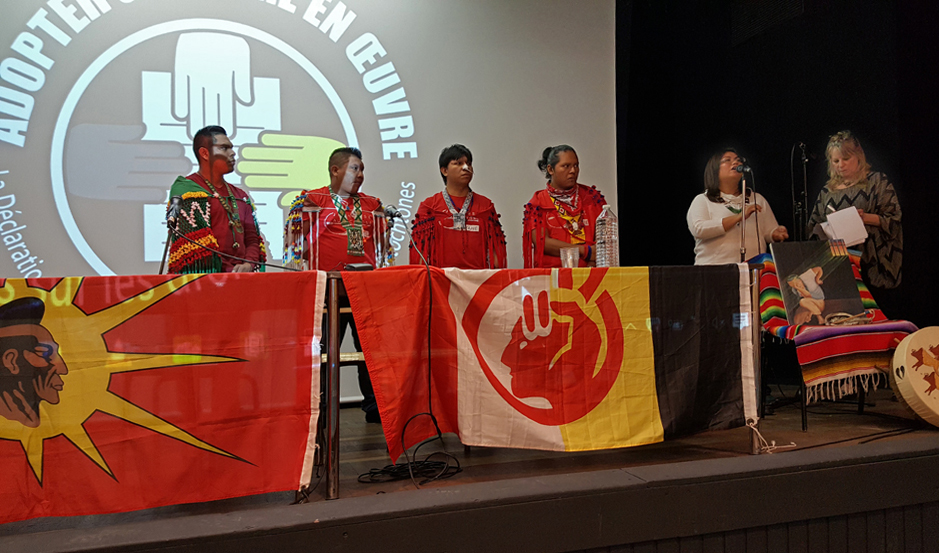 This year, for several months already, Natives of French Guiana have organized protests and strikes that ultimately forced the authorities and the media to notice them and report about them. The Indigenous Movement in French Guiana started long before, but it is only when the protests and strikes began to disturb the quiet life of settlers and authorities that they were forced to talk about it outside Guiana. Of course, the response of the French Government is totally inadequate. However, the existence of Indigenous Peoples “in France” has become visible. On October 14th, 2017, Christophe Pierre aka Yanuwana Tapoka, was among the speakers invited by the CSIA-nitassinan for their 37th Annual Day of Solidarity. You will find below my translation of Yanuwana’s speech. Before he spoke, a delegation from Natives of French Guiana came on stage to remind French people that there are “Indians in France”. The title was chosen by me, from his words, the responsibility for the choice is entirely mine.
This year, for several months already, Natives of French Guiana have organized protests and strikes that ultimately forced the authorities and the media to notice them and report about them. The Indigenous Movement in French Guiana started long before, but it is only when the protests and strikes began to disturb the quiet life of settlers and authorities that they were forced to talk about it outside Guiana. Of course, the response of the French Government is totally inadequate. However, the existence of Indigenous Peoples “in France” has become visible. On October 14th, 2017, Christophe Pierre aka Yanuwana Tapoka, was among the speakers invited by the CSIA-nitassinan for their 37th Annual Day of Solidarity. You will find below my translation of Yanuwana’s speech. Before he spoke, a delegation from Natives of French Guiana came on stage to remind French people that there are “Indians in France”. The title was chosen by me, from his words, the responsibility for the choice is entirely mine.
Christine Prat
Yanuwana Tapoka aka Christophe Pierre, Paris, October 14th 2017
Transcript and translation Christine Prat
Also published on Censored News
En Français
“Greetings to you all. My name is Christophe Pierre in the language of the colonialists, Yanuwana Tapoka in my mother tongue.
First, I think it is necessary to describe, to give a short overview, of the situation and history of French Guiana, which is currently, in legal terms, a French ‘département’ [county], a French ‘region’ like any other. What is French Guiana? French Guiana is in South America, it is a French Amazonian territory. It is 50% of the biological diversity of Europe, 80% of the biological diversity of France. It is about 300,000 inhabitants, including a handful of Native Americans who survived colonization; a handful: if we really have to give figures, it’s between ten to fifteen thousand, according to the latest information. As compared to those ten to fifteen thousand, it is nowadays estimated that, when the colonialists arrived, there were 25 to 30 Peoples, there are only six left today. Those six Peoples are the Kali’na, the Palikuyene and the Lokono, who live along the coast, and the Teko, the Wayãpi and the Wayana who live inland. Problems are different, power relationships are different depending on the geographical situation, but the struggle is practically the same, since the 1980’s.
The first gathering of Native Americans of Guiana took place in Awala, in 1984 – on December 8th and 9th, 1984. It was the first time that youths – youths at the time, now they are Elders – Native youths, spoke out against the French institution and took a political stand. This meant that a new form of struggle began for Native Americans of Guiana, a political struggle symbolized by Félix Tiouka’s speeches – I think that CSIA supported that struggle – together with Alexis Tiouka and others. They were young people who had been in the ‘Indian’ boarding schools. The Indian boarding schools meant abducting children from the families, taking children away from their parents, and put them in catholic boarding schools, where they were forced to learn the Catholic, Christian religion, from 5-years-old on, sometimes even from 3, where speaking our languages was forbidden and where, thus, a massive destruction of our traditional societies occurred. For 80 years, France ran them through the Church, and still does now… [most of those boarding schools are now closed, but at least one still exists, due to the lack of schools in some Indigenous territories].
We have a special status, in French Guiana, that makes it a territory that still has to be evangelized, as priests still get their wages from the French State. We had to face that situation, to confront a Guianese political class which did not want to hear about Native Americans, to confront France, which had almost exterminated Native Americans, physically, culturally, and in their identity. In the 1980’s, there was a youth movement mainly following leaders as Alexis Tiouka, Félix Tiouka, Thomas Appolinaire, who have been involved, in the following years, in the creation of French municipalities with Native American governance, as well as what has been called later ‘collective use rights areas’. Those collective use rights areas are the only possibility we had to try to get back some of our ancestors’ lands.
Thus, that’s where we were then, some statements were made, then the Association of Native Americans of French Guiana is created, which will include members of each Nation, of the six Nations, and will later become the Federation of Native American Organizations of Guiana (FOAG), which will lead struggles to spread information internationally. The FOAG appealed several times to the United Nations and came several times to France, to meet, for instance, President Chirac, and to take part in the campaign for recognition of those crimes that were the ‘human zoos’, in the Jardin d’Acclimatation, here in Paris. In 1994, a ceremony took place, here, at the Jardin d’Acclimatation, where, in 1858 – I think, maybe a few years later – Kali’na who had been taken from villages were exhibited in the human zoos, in the Jardin d’Acclimatation, in Paris. Most of them never returned, they died from the cold or something else, and the bodies are still held by France. The bodies had been dissected, later, experiments had been done on them. Thus, we are still trying to struggle on that issue. There has been a ceremony for the rest of their souls, once.
This is our history with France, until, approximately, the 2000’s. Then there has been sort of a dead silence, nothing was heard any more about Native Americans. The leaders of the time were getting exhausted, some of them have, I think, given up, dropped the issue, as, let’s say, the destruction of Native American identity had gone so far, that it was difficult to mobilize the people, even villagers, on issues that affected them directly. As a matter of fact, assimilation had gone so far, that we almost disappeared as a people. At the same time, illegal gold mining had begun. From the years 2000’s, the first illegal gold seekers settled in Wayana and Teko territories. With all the usual consequences, mercury poisoning, poisoning of the fish, birth defects for children… On several occasions, the Wayana tried to warn the French State, demanding for a direct solution to suppress illegal gold mining. Today, we have come to realize that illegal gold mining means that there are about 30,000 illegal gold seekers a year, Brazilian or from Guyana, present in the National Park called Amazonian Park of Guyana, and they keep polluting rivers and streams. There are 120 kilometers of waterways in French Guiana, and now, if we really look at it, there is only ONE river which is not polluted by gold mining. The Guyana Plateau, the north of Amazon, is the second largest freshwater reserve in the world, after all, and the mountain range from the south border between Guiana and Brazil to Venezuela, where the Orinoco begins, is one of the sources of the Amazon River, the largest river in the world. This is the situation with which the Wayana are confronted, and today they get very little support. On the national level, the French State puts up missions – ‘Anaconda’ was the first – and operations, but they are ineffective: some twenty military police raid an illegal site every now and then, but I think that 275 have been reported and located, this year, and there are still others which are not yet located.
Thus, this dead silence prevails, until the 2010’s, and then, there is a revival of Native American identity. This is what we always try to explain, again and again. Still, I think that we belong to the generation that has gone all the way through it. In the 1980’s, they were the first who had had some education and knew French, and understood how absurd what was proposed to us was. In the 2010’s, we were the first generation that completed college education, we had a lifestyle model very much the same as that of any western citizen. But having gone straight, all the way, we realized, first individually, as each member of the Indigenous movement, that it did not fit us. We had received a traditional education and teaching, as we did not go to the boarding schools, but we did not acquire the deepest aspects of Native American identity. And when we came to realize that, it was very violent for us. As a result, we started with the opposite process to re-appropriate our Native identity, the identity of our respective peoples. So, starting from there, realizing what is proposed to us, what is happening in the whole world, we decided to take matters in our own hands and to start doing things, but in a different way from what our Elders had done. Our elders were somehow scared, they were alone, they felt very isolated. The dialogue, the relations they had with France were different from ours. Today, we want a change, and we are ready to do anything for it. So, starting from the fact that ‘we are ready to do anything’, we began to undertake actions, and we soon realized that the French State had done its work well, that the French EMPIRE had done its work well. France is the most gifted colonial country in the world. The United States, the South American countries, are all small players, compared to France. They created ways to put peoples to sleep. Nowadays, for instance, France signed the United Nations Declaration on recognition of Indigenous Peoples. But it is only declarative. Today, it is still written in the French Constitution that Guiana is an unoccupied territory, without owner, and that when the French arrived, there were no human beings on Guiana lands. Today, if you realize what French law means, we are peoples supposed to mainly live off the forest. This is our status. And today, we realize too that, to say it lightly, the Native American struggle has become fashionable again. It is true that it feels good. And, (to come back on what Edith said earlier), that is why we said that, why we are our ancestors’ wildest dream, it is because 525 years after the end of our world, that world has disappeared. The one we had for thousands of years, that territory on which we roamed around, to which we belonged and which belonged to us. It is this relationship we had with those lands which disappeared then. Everything disappeared. At the moment when our worlds met, it was the end for us. Today, there is not much hope left over. In a few years – we reckon 20 years – in 20 years, thus, we shall be able to see if we succeeded or not. We don’t have hundreds of years ahead of us. Twenty years ago, we could say ‘it’s time to take action’, now, this time is gone. How shall I put it? We must be twice as much active, but the world you proposed, the world with which you came, is devouring itself. How did you do that? I don’t know. But to manage to convince the world that water, forests, land and air are only secondary elements, which can be destroyed in the name of development, is something I can’t find words to describe… You are Masters!
This is the healing we must achieve, that is the way we talk about it. We must purify the minds, get people to understand what is fundamental. So, here we are, a small group of young Native Americans, with still a little bit of hope, and we want to change things against the French State, which is so gifted to enslave peoples and put them to sleep. Today, there are several issues on which we have to work, about which we must fight. First is the health emergency, meaning that illegal gold seeking must be stopped at last, that what is damaged must be repaired, because it is a duty. We are aching with the Earth, we could not prevent that wound, that open wound. But at a point, it must be stopped, and then it must be healed, the Earth must be healed, water must be healed, our children must be healed. Then, there is that other mad issue, the mining project called ‘Montagne d’Or’ [‘Mountain of Gold’]. It is a Russian-Canadian project for an industrial gold mine. That project is the first of the kind in Guiana. There is currently a movement developing around the rejection of that project. But it is here, that everything is decided, it is in Paris that everything is thought of, centralization is the way France functions, so, everything is decided in Paris. But there are issues which primarily concern us, issues that will affect our children. And it is here that it is decided, in your country, our children’s future is decided in your country. This is the message that we came to bring over today. […]
This is what I wanted to tell you. […] There are practical issues on which we can fight each other, but also on which we can all work together, around which we can unite, because it’s an emergency, we have been involved in it for years now. And we are extremely angry against your country, and, at a point, to achieve a reconciliation, to contemplate forgiveness, you must, each and every one of you, admit your crimes.”


